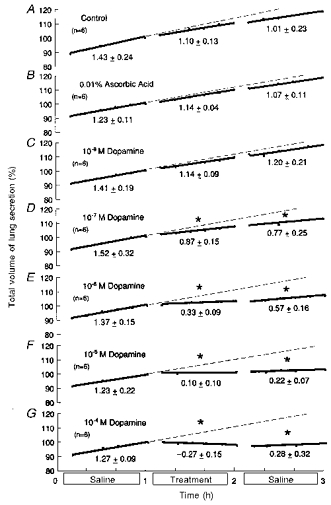Figure 1. Effects of dopamine on lung liquid production by in vitro lungs from fetal guinea-pigs.

Based on 42 fetuses of 61 ± 1 days of gestation and 81.9 ± 9.5 g body wt (means ± s.d.). During the middle hour, lungs were immersed in saline containing: saline alone (untreated preparations) (A); 0.01 % ascorbic acid control (B); 10−8 m dopamine (C); 10−7 m dopamine (D); 10−6 m dopamine (E); 10−5 m dopamine (F); or 10−4 m dopamine (G). Ordinates: total volume of lung liquid expressed as a percentage of that present at the end of the first hour, immediately prior to treatment, where 100 % was: 0.91 ± 0.23 ml (means ± s.d.) (A); 0.92 ± 0.11 ml (B); 1.04 ± 0.12 ml (C); 1.08 ± 0.27 ml (D); 1.05 ± 0.16 ml (E); 0.97 ± 0.07 ml (F); and 0.94 ± 0.13 ml (G). Abscissae: time in hours. All regressions are lines of best fit; slopes represent production rates. Values below the lines are average production rates in ml (kg body wt)−1 h−1. Asterisks above the lines show significant changes from the rate for production in the first hour (ANOVA). Standard errors of the mean are omitted for clarity, but they averaged: 1.21 ± 0.12 (A); 0.96 ± 0.09 (B); 1.25 ± 0.13 (C); 1.09 ± 0.12 (D); 1.09 ± 0.13 (E); 1.02 ± 0.09 (F); and 1.22 ± 0.17 (G). Corresponding coefficients of variation were: 2.90 ± 0.31 % (A); 2.26 ± 0.20 % (B); 2.96 ± 0.29 % (C); 2.59 ± 0.27 % (D); 2.61 ± 0.30 % (E); 2.56 ± 0.23 % (F); and 3.05 ± 0.41 % (G).
